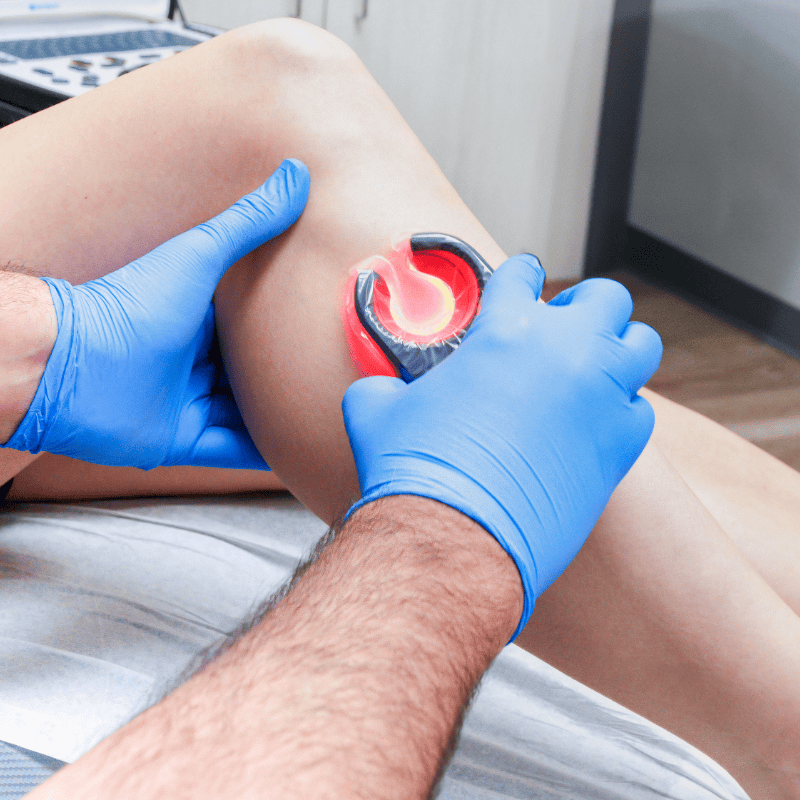If you’re planning to visit a vein treatment clinic, one of the first questions you may have is: How long will the appointment take? Time is a valuable factor, especially when balancing work, family, and personal care. A typical vein treatment appointment usually lasts between 30 minutes to 1 hour, depending on the procedure and the complexity of your vein condition. However, the complete experience goes beyond just the procedure time. To help you plan ahead, let’s break down what to expect at a vein clinic, how long each phase takes, and what influences the overall appointment duration.
Table of Contents
What Happens During the Initial Consultation?
Your first visit to a vein treatment clinic usually starts with an initial consultation. This is where the vein specialist evaluates your symptoms, medical history, and performs a physical examination of your legs.
Time Estimate: 45 minutes to 1 hour
During this session, you can expect the following:
- A thorough discussion about your symptoms such as leg pain, swelling, heaviness, or visible varicose veins.
- A review of your lifestyle, family history, and any previous vein-related treatments.
- A non-invasive Doppler ultrasound to evaluate the blood flow and identify faulty veins.
This stage is critical in diagnosing your condition and creating a personalized treatment plan. While it’s not a treatment per se, this consultation lays the foundation for a successful outcome.
How Long Do Diagnostic Procedures Take?
If further testing is needed, the doctor may schedule diagnostic imaging. Most vein clinics perform duplex ultrasound right in the office, which helps map out the veins and find out where blood is pooling or flowing in the wrong direction.
Time Estimate: 20 to 40 minutes
The ultrasound technician applies gel to your legs and uses a handheld device to scan them. The test is painless and provides the physician with essential insights before recommending a treatment.
What Are the Common Vein Treatment Procedures and Their Duration?
Once your condition is diagnosed, you’ll be scheduled for a treatment procedure. Each method differs in time based on the technology used, the extent of the vein issue, and your body’s response.
- Sclerotherapy
This is one of the most common outpatient procedures to treat spider veins and small varicose veins.
Time Estimate: 20 to 40 minutes
Sclerotherapy involves injecting a solution into the affected vein, which causes it to collapse and eventually disappear. There’s no anesthesia required, and patients can walk out shortly after the procedure.
- Endovenous Laser Ablation (EVLA) or Radiofrequency Ablation (RFA)
These are more advanced techniques used to treat larger varicose veins.
Time Estimate: 45 minutes to 1 hour
In this minimally invasive procedure, the doctor inserts a catheter into the vein using ultrasound guidance and closes it with laser or radiofrequency energy. Local anesthesia is used, and compression stockings are typically required post-treatment.
- VenaSeal Closure System
This newer method uses a medical adhesive to seal off the vein.
Time Estimate: 20 to 30 minutes
Unlike heat-based treatments, VenaSeal doesn’t require tumescent anesthesia, and patients can usually resume normal activities the same day.
- Ambulatory Phlebectomy
For twisted or bulging veins near the surface, this procedure may be recommended.
Time Estimate: 1 to 1.5 hours
The vein is removed through tiny incisions, and the recovery is relatively quick. This might take a bit longer than other treatments because of the precision required.
What Post-Treatment Time Should You Prepare For?
After the procedure, the vein specialist will typically advise a short recovery period at the clinic.
Time Estimate: 15 to 30 minutes
You may need to rest briefly and walk around under supervision before being discharged. Instructions will be provided on aftercare, compression stocking use, and follow-up appointments.
What Influences the Duration of Your Visit to a Vein Treatment Clinic?
Several factors determine how long your appointment might last, such as:
- The complexity of your vein condition: More severe or widespread vein issues take longer to treat.
- The type of procedure: Simple injections take less time than laser ablation or surgical options.
- Experience of the clinic and staff: A well-organized vein treatment clinic with advanced equipment can offer faster, smoother service.
- Patient compliance and medical history: If you have other underlying conditions, additional care may be needed, extending the duration.
Understanding what to expect at a vein clinic helps you prepare and plan your day accordingly.
Can You Resume Daily Activities Right After the Appointment?
In most cases, yes. Vein treatments today are highly advanced and minimally invasive. Many patients return to work or run errands immediately following the appointment. Walking is usually encouraged to promote blood circulation and speed up healing.
However, strenuous workouts, heavy lifting, or hot baths might be discouraged for a few days. Your doctor will give you specific guidelines based on the treatment performed.
Are Multiple Appointments Required?
Yes, depending on your vein condition and the treatment method used, you may need multiple sessions.
- Sclerotherapy often requires 2 to 4 sessions spaced a few weeks apart.
- Laser or ablation treatments might need one follow-up to ensure the vein has sealed properly.
- Annual check-ups are often recommended to monitor for recurrence or new vein issues.
Each session usually falls within the same time frame: 30 minutes to 1 hour.
Why Choose a Specialized Vein Treatment Clinic?
Choosing a dedicated vein treatment clinic ensures:
- Access to skilled vein specialists with focused expertise.
- On-site diagnostic tools like ultrasound imaging.
- Personalized care plans tailored to your needs.
- Comfortable, patient-friendly environments designed for outpatient procedures.
Unlike general hospitals or dermatology clinics, specialized vein centers offer better efficiency and often shorter appointment durations, thanks to their streamlined workflows and modern technologies.
Final Thoughts: How Long Should You Set Aside?
In conclusion, a typical vein treatment appointment will take anywhere from 30 minutes to 1.5 hours, depending on the type and complexity of the procedure. Initial consultations may last up to an hour, while actual treatments are usually shorter. Most patients are in and out the same day with little to no downtime.
If you’re unsure how long your visit will take, call ahead and ask your vein clinic for details about the treatment process. Knowing what to expect at a vein clinic will help you approach the appointment with confidence and clarity. Always choose a reputable vein treatment clinic that provides comprehensive care, clear timelines, and effective results.

